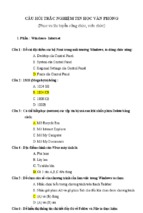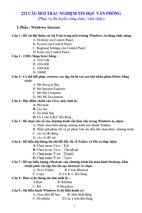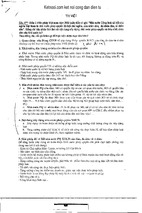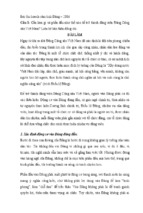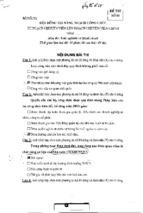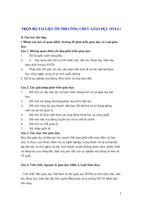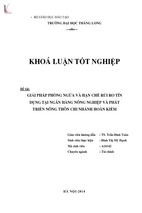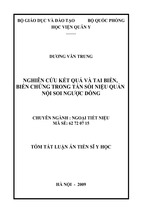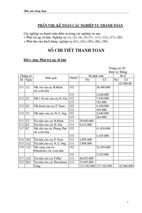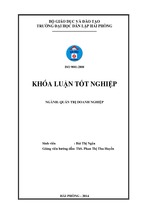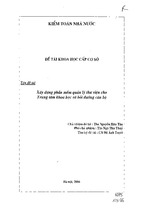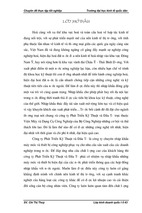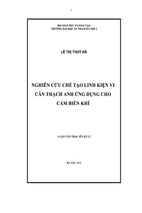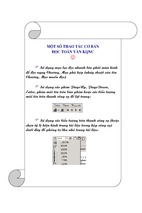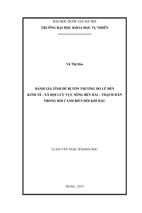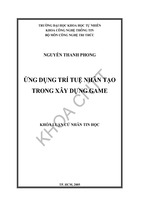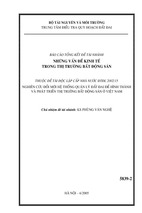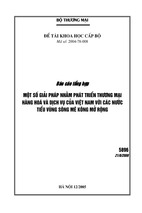No part of this publication may be reproduced, stored in a retrieval system, or transmitted
in any form or by any means, electronic, mechanical, photocopying, recording, scanning,
or otherwise, except as permitted under Section 107 or 108 of the 1976 United States
Copyright Act, without either the prior written permission of the Publisher, or
authorization through payment of the appropriate per-copy fee to the Copyright
Clearance Center, Inc., 222 Rosewood Drive, Danvers, MA 01923, 978-750-8400,
fax 978-646-8600, or on the web at www.copyright.com. Requests to the Publisher for
permission should be addressed to the Permissions Department, John Wiley & Sons, Inc.,
111 River Street, Hoboken, NJ 07030, 201-748-6011,
fax 201-748-6008, or online at http://www.wiley.com/go/permissions.
d
Human Resources
Management
in the
Hospitality Industry
David K. Hayes, Ph.D.
Jack D. Ninemeier, Ph.D.
John Wiley & Sons, Inc.
ffirs.indd i
12/14/07 7:58:49 PM
d
Human Resources
Management
in the
Hospitality Industry
David K. Hayes, Ph.D.
Jack D. Ninemeier, Ph.D.
John Wiley & Sons, Inc.
ffirs.indd i
12/14/07 7:58:49 PM
This book is printed on acid-free paper. ⬁
Copyright © 2009 by John Wiley & Sons, Inc. All rights reserved
Published by John Wiley & Sons, Inc., Hoboken, New Jersey.
Published simultaneously in Canada.
No part of this publication may be reproduced, stored in a retrieval system, or transmitted
in any form or by any means, electronic, mechanical, photocopying, recording, scanning,
or otherwise, except as permitted under Section 107 or 108 of the 1976 United States
Copyright Act, without either the prior written permission of the Publisher, or
authorization through payment of the appropriate per-copy fee to the Copyright
Clearance Center, Inc., 222 Rosewood Drive, Danvers, MA 01923, 978-750-8400,
fax 978-646-8600, or on the web at www.copyright.com. Requests to the Publisher for
permission should be addressed to the Permissions Department, John Wiley & Sons, Inc.,
111 River Street, Hoboken, NJ 07030, 201-748-6011,
fax 201-748-6008, or online at http://www.wiley.com/go/permissions.
Limit of Liability/Disclaimer of Warranty: While the publisher and author have used their
best efforts in preparing this book, they make no representations or warranties with
respect to the accuracy or completeness of the contents of this book and specifically
disclaim any implied warranties of merchantability or fitness for a particular purpose.
No warranty may be created or extended by sales representatives or written sales materials.
The advice and strategies contained herein may not be suitable for your situation. You
should consult with a professional where appropriate. Neither the publisher nor author
shall be liable for any loss of profit or any other commercial damages, including but not
limited to special, incidental, consequential, or other damages.
For general information on our other products and services, or technical support, please
contact our Customer Care Department within the United States at 800-762-2974, outside
the United States at 317-572-3993 or fax 317-572-4002.
Wiley also publishes its books in a variety of electronic formats. Some content that
appears in print may not be available in electronic books.
For more information about Wiley products, visit our Web site at http://www.wiley.com.
Library of Congress Cataloging-in-Publication Data:
Hayes, David K.
Human resources management in the hospitality industry / David K. Hayes,
Jack D. Ninemeier.
p. cm.
Includes index.
ISBN 978-0-470-08480-9 (cloth)
1. Hospitality industry—Personnel management. I. Ninemeier, Jack D. II. Title.
TX911.3.P4H39 2008
647.94068—dc22
2007021312
Printed in the United States of America
10 9 8 7 6 5 4 3 2 1
ffirs.indd ii
12/14/07 7:58:50 PM
d
Contents
Preface
PART I
CHAPTER 1
vii
OVERVIEW OF HUMAN RESOURCES MANAGEMENT
Introduction to Human Resources in the Hospitality
Industry
3
Overview of Hospitality Industry
4
Managing Human Resources in the Organization
7
Human Resources Activities
9
Diversity in the Hospitality Workplace
14
Specific Human Resources Responsibilities
19
Human Resources Terms
23
For Your Consideration
23
Case Study: Human Resources Management in Action
Internet Activities
25
Endnote
26
CHAPTER 2
23
The Legal Environment of Human Resources
Management
27
Employment Law
28
The Government’s Role in the Management of Human Resources
A Manager’s Review of Significant Employment Legislation
32
The International Legal Environment for Multinational Hospitality
Companies
49
The Special Role of the Hospitality Unit Manager
55
Human Resources Terms
58
For Your Consideration
58
Case Study: Human Resources Management in Action
59
Internet Activities
61
CHAPTER 3
30
Human Resources Management: Policies
and Procedures
63
HR Policy and Procedures Activities
64
Steps in HR Policy and Procedures Development
ftoc.indd iii
1
74
12/14/07 8:42:13 PM
iv
Contents
Review for Legal Compliance
77
Applying Advanced Technology to HR Policies and Procedures
HR Policies and Procedures Documentation and Record Keeping
Human Resources Terms
92
For Your Consideration
92
Case Study: Human Resources Management in Action
92
Internet Activities
95
PART II
CHAPTER 4
SECURING HUMAN RESOURCES
97
Employee Recruitment and Selection
99
Factors Affecting Recruiting Efforts
100
The Search for Qualified Employees
105
Factors Affecting Selection Efforts
112
Negligent Hiring
126
Job Offers
128
Human Resources Terms
129
For Your Consideration
130
Case Study: Human Resources Management in Action
Internet Activities
131
CHAPTER 5
CHAPTER 6
HUMAN RESOURCES IN ACTION
Planning Training Programs
133
166
169
171
Introduction to Training
172
Learning Principles Drive Training Principles
180
Focus on the Trainer
186
Use a Formal Training Process
188
Human Resources Terms
208
For Your Consideration
209
Case Study: Human Resources Management in Action
Internet Activities
211
ftoc.indd iv
130
First Impressions and an Ethical Foundation
The New Employee Adaptation Process
135
Orientation Programs and Procedures
139
Employee Handbooks
149
Mentoring Programs
153
Human Resources and Ethical Concerns
159
Human Resources Terms
166
For Your Consideration
166
Case Study: Human Resources Management in Action
Internet Activities
168
Endnotes
168
PART III
80
86
209
12/14/07 8:42:14 PM
v
Contents
CHAPTER 7
Delivering and Evaluating Training Programs
Introduction to Individual On-Job Training
214
Steps in On-Job Training
219
Other Individual Training Methods
227
Introduction to Group Training
229
Preparing for Group Training
231
Facilitating Group Training Sessions
236
Training Evaluation
246
Human Resources Terms
258
For Your Consideration
258
Case Study: Human Resources Management in Action
Internet Activities
261
Endnote
261
CHAPTER 8
Compensation Programs
259
263
Compensation Management
264
Legal Aspects of Compensation Management
271
Direct Financial Compensation
275
Indirect Financial Compensation
283
Nonfinancial Compensation
288
Human Resources Terms
290
For Your Consideration
291
Case Study: Human Resources Management in Action
Internet Activities
293
CHAPTER 9
213
Performance Management and Appraisal
291
295
Performance Management
296
Progressive Discipline
310
Behavior Improvement Tactics
316
Employee Separation
318
Legal Considerations of Performance Management and Appraisal
Human Resources Terms
327
For Your Consideration
328
Case Study: Human Resources Management in Action
328
Internet Activities
330
CHAPTER 10
Employee Health and Safety
Legal Aspects of Employee Protection
Employee Health
340
Employee Assistance Programs (EAPs)
Employee Safety and Security
344
Employee Security Programs
350
Human Resources Terms
359
ftoc.indd v
323
331
333
342
12/14/07 8:42:15 PM
vi
Contents
For Your Consideration
360
Case Study: Human Resources Management in Action
Internet Activities
362
PART IV
CHAPTER 11
SPECIAL HUMAN RESOURCES CONCERNS
365
Role of Human Resources in Strategic Planning
and Organizational Change
367
Organizational Change Is Constant
369
Human Resources and Strategic Planning
372
Continuum of Change
379
Resistance to Organizational Change
391
Human Resources Terms
396
For Your Consideration
396
Case Study: Human Resources Management in Action
Internet Activities
398
Endnote
398
CHAPTER 12
397
Critical Issues in Human Resources Management
Unionization in the Hospitality Industry
400
A Multigenerational Workforce
411
Downsizing and Outsourcing
417
Succession Planning Activities
425
Career Development Programs
429
Human Resources Terms
437
For Your Consideration
437
Case Study: Human Resources Management in Action
Internet Activities
439
Endnotes
440
CHAPTER 13
360
399
438
Human Resources: Planning for Global Expansion
441
by Dr. A. J. Singh
The Global Imperative: Why Hospitality Companies
Expand Internationally
442
Cultural Factors Impact International Operations
448
Focus on International Assignments
458
Managing Employees During Global Assignments
468
Human Resources Terms
484
For Your Consideration
484
Case Study: Human Resources Management in Action
484
Internet Activities
485
Endnotes
486
Index
ftoc.indd vi
487
12/14/07 8:42:15 PM
d
Preface
T
oday’s hospitality professional must be an expert at managing many
functions. Ask successful hospitality managers working at all levels of the
industry to identify their most daunting tasks, however, and you will find
that these tasks relate to people management. In every segment of the hospitality
industry, finding, training, and retaining outstanding staff members are always
challenging tasks, but every manager must master them.
Rising labor costs, increased competition for quality staff, changing workers’ attitudes, increased customer expectations, and a proliferation of new laws related to
what Human Resources (HR) managers may and may not do legally are among many
factors that point out the importance of effective HR management education. To help
meet the challenges of teaching professional HR management, Human Resources
Management in the Hospitality Industry has been painstakingly developed.
As the text’s authors, we are especially pleased with the result and believe it
will be well received by instructors, students, and those industry practitioners who
are in the trenches of day-to-day hospitality operations. Some might argue that the
concepts that should be taught in an HR management course are universal, thus a
text useful for managers in general business, manufacturing, or other service
industries would also be appropriate for those students studying to enter the field
of hospitality. The authors counter that the needs of hospitality students are different and that the teaching of HR management to these students demands the availability of an excellent hospitality-specific text. We believe this to be true for three
important reasons:
1. Organizational structure of hospitality business. Many HR texts describe the
operation of an organization’s HR department. In the hospitality industry,
the on-site manager is that unit’s HR department in all except the largest of
operations. Thus, it is extremely important that hospitality managers be well
versed in HR management, including employee recruitment and selection,
training, compensation, performance appraisal and discipline, safety, and other
key areas in which they will be personally called upon to make critical decisions.
Therefore, this text asks the reader to assume the role of that decision maker.
2. Diversity of employees. The management of a hospitality unit requires managers to be adept at understanding the HR-related concerns of a wide range of
employees with differing experience and skill levels. The backgrounds of workers found in hospitality operations range from those who are entry level to
others who are highly educated and proficient in advanced management areas
such as finance, marketing, production, and revenue management. As a result,
fpref.indd vii
12/14/07 11:50:55 AM
viii
Preface
hospitality managers must be equally able to compute the overtime wages of
tip-credit eligible hourly employees and to understand how the SarbanesOxley Act affects the work of the financial staff they supervise. This book
recognizes that diversity.
3. Complexity. There is no doubt that successful hospitality managers must be
particularly skilled and knowledgeable. For example, they serve as both manufacturing and retail managers. A professional hospitality manager is unique
because all of the functions of product sales, from item conceptualization to
product delivery, are in the hands of the same individual. The result is that
these managers must understand much more than how they will interface with
an HR department. Instead, they must realize that, in the eyes of their employees, fellow managers, company owners, and their guests, they are the HR
department, and thus must be aware of the legal (and many other) consequences of their decision making. As a result, the examination of complex legal
implications of HR management is a dominant theme throughout this book.
Text Concept and Content
As we identified the content for this hospitality-specific HR text, we continually
recognized the distinction between HR management and supervision. Historically,
many hospitality students have been taught how to supervise employees. The reasoning was simple: good managers become recognized as such by first being good
supervisors. In today’s litigious society, however, managers (and students) who do
not understand the legal requirements and responsibilities that must underpin
their actions are greatly disadvantaged. For example, hospitality supervisors and
managers may know what they want to do to build an effective workforce; however, at the same time, they must not lack an understanding about what they are
legally allowed to do, required to do, or even prohibited from doing! Those who
have been teaching how to supervise human resources now, with the publication
of Human Resources Management in the Hospitality Industry, have the preferred
option of teaching their students how to legally manage those resources.
With the goal of effectively aiding in the teaching of HR management, the
authors created a manuscript with 13 chapters, divided among the following four
major parts.
PART I: OVERVIEW OF HUMAN RESOURCES MANAGEMENT
Part I introduces readers to the topic of HR management in hospitality and contains the following chapters:
1: Introduction to Human Resources in the Hospitality Industry
2: The Legal Environment of Human Resources Management
3: Human Resources Management: Policies and Procedures
fpref.indd viii
12/14/07 11:50:56 AM
Preface
ix
In this critical foundation section, readers will learn about the diversity of the
hospitality industry’s workers, the important labor-related legislation they must
know to manage these workers, and the key aspects of legal compliance, policy
documentation, and record keeping required of successful HR managers.
PART II: SECURING HUMAN RESOURCES
Part II of the text examines the important topics of legally recruiting, hiring, and
orienting hospitality employees. It contains the following key chapters:
4: Employee Recruitment and Selection
5: First Impressions and an Ethical Foundation
In this section, readers are introduced to many key employee selection concepts, including legal recruitment, interviewing, and selection, as well as negligent
hiring, employee orientation, handbooks, ethics, and social responsibility.
PART III: HUMAN RESOURCES IN ACTION
Part III of this text introduces readers to specific activities implemented by effective HR managers. Critical chapters included in this section are:
6: Planning Training Programs
7: Delivering and Evaluating Training Programs
8: Compensation Programs
9: Performance Management and Appraisal
10: Employee Health and Safety
Because of its detailed treatment of employee training, this part of the text,
perhaps more than any other, illustrates the distinctive approach to HR management. Effective HR managers must understand and implement training principles.
With the large number of unskilled positions to be filled, employee turnover rates
that often approach 100 percent or more per year, a labor pool that grows increasingly diverse, and increasing job complexity, employee training is the key to quality
guest service and operational profitability. For this reason, the text examines the
key HR concepts of job descriptions, job breakdowns, and task analysis in this section (rather than in employee recruiting). This content organization approach is
consistent with the concept that, in the overwhelming number of cases, newly
hired hospitality employees must be trained to do their new jobs. Thus, hospitality
job content can best be understood, not in terms of the skills potential employees
must bring to the workplace, but rather in terms of the training required to prepare qualified employees for their positions.
fpref.indd ix
12/14/07 11:50:57 AM
x
Preface
Other critical HR activities addressed in this text part include the legal aspects
of compensation management, wages, salary, and benefit administration, as well as
nonfinancial employee compensation. Additional topics of importance included
are performance appraisal, discipline, and separation. This section concludes with
an examination of the importance of employee health and physical safety, including a thorough examination of harassment, a topic increasingly recognized as one
important to the physical safety (as well as the physical and mental health) of
employees of diverse gender, race, religion, and sexual orientation.
PART IV: SPECIAL HUMAN RESOURCES CONCERNS
In the concluding section of the text, special concerns of HR managers in hospitality are addressed. Chapters included in this section are:
11: Role of Human Resources in Strategic Planning and Organizational
Change
12: Critical Issues in Human Resources Management
13: Human Resources: Planning for Global Expansion
This section contains a range of topics and information important to HR
managers. Key sections included are those addressing change, employee empowerment, and strategic planning. In addition, employee labor unions in hospitality are
thoroughly examined in this section, as are the topics of succession planning,
cross-generational management, and downsizing strategies. Chapter 13, the text’s
concluding chapter, illustrates a final point of differentiation for this text. Globalization of the hospitality industry is now occurring at an increasingly fast pace. For
American companies, expansion will, in the future, occur as frequently outside
U.S. borders as within them. As a result, those professionals entering the industry
must understand the unique challenges of managing HR resources globally as well
as locally. It is our firm belief that in today’s world, a global view is the only
approach to take.
Text Features
From a reader’s perspective, the features of a textbook often are as important as its
content. Thoughtfully designed textbook features make the content presented easy
to read, easy to understand, and easy to retain. You will find that Human Resources
Management in the Hospitality Industry is especially reader friendly. The following strategically designed features help readers learn:
䡲 Chapter Outline. The two-tier chapter outline at the beginning of each chapter shows the context for each topic and provides a simple way to quickly find
material within the chapter.
fpref.indd x
12/14/07 11:50:57 AM
Preface
xi
䡲 Checklist of Learning Objectives. This list of measurable learning objectives
helps readers anticipate the skills or knowledge they will acquire upon completing the chapter. A unique feature of this text’s design is that these learning
objectives are listed a second time in their exact chapter location, allowing
readers to be prepared for and excited about what they will be able to achieve
when all of the chapter’s material is successfully mastered.
䡲 Impact on Human Resources Management. Each chapter utilizes this short
feature to explain, in clear terms and before any content is presented, exactly
why the chapter’s topic is important. This feature makes it easy for readers to
see what the chapter is about and what they will learn by reading it.
䡲 Human Resources Terms. As is true with many areas of specialization within
hospitality management, HR managers speak their own language. In recognition of this fact, more than 300 special HR-related terms are defined within
the text (an alphabetical glossary of these terms is available on the text’s Web
site: www.wiley.com/college/hayes).
䡲 It’s the Law! Reinforcing its emphasis on the legal aspects of HR management,
this feature is included in every chapter. It explains, in detail, how current or
proposed legislation directly affects the topics presented and the resulting HR
management-related actions that are, and are not, legally allowable or
advisable.
䡲 Human Resources Management: Current Events. This feature, included in
each chapter, and taken from current industry news, trends, and issues, illustrates how concepts presented in the text are played out in the real world. For
example, employee and guest smoking in the workplace is an important HR
issue. It becomes an even more pressing HR issue, however, when local regulatory bodies propose the legislation of facility-wide smoking bans. The
examination of in-the-news HR-related topics provides the content of this
attention-getting feature.
䡲 Human Resources Management Issues. Each chapter contains several of these
real-world mini-cases designed to make readers think about how they would
personally use the information they have learned to respond to HR-related
situations they will likely encounter in their jobs. Questions are included at
the end of every case to help stimulate classroom discussion.
䡲 List of Human Resources Terms. Readers often need help in remembering key
concepts that should be mastered after reading a section of a book. Thus, the
Human Resources Terms are listed again at the conclusion of each chapter and
in the order in which they were presented in the chapter, to provide a helpful
study aid.
䡲 For Your Consideration. These end-of-chapter questions about the chapter’s
content are excellent for reader review. They are designed to be effective in
stimulating classroom dialogue, team activity assignments, and/or for homework assignments.
䡲 Chapter Ending Case Study. Case studies in Human Resources Management in
the Hospitality Industry are unique. They present real-life situations and then
ask readers to examine that same situation from varying HR perspectives. For
example, a case study examining the declining performance of an aging, but
fpref.indd xi
12/14/07 11:50:57 AM
xii
Preface
long-term hospitality employee asks readers to consider the issue from three
distinct perspectives: (1) the appropriateness of the employee appraisal system
in use; (2) the importance, to an organization, of maximizing employee performance; and (3) an employer’s responsibility to its long-term employees.
Several questions are asked, focusing on multiple dimensions of the case study
to emphasize critical thinking.
䡲 Internet Activities. The importance of the Internet as a learning tool cannot
be overlooked in any field of study. In this text, the Internet Activities feature
that concludes each chapter not only identifies pertinent Web sites to visit, but
it also gives readers specific instructions about what they should do, consider,
and learn when they visit the site.
We know that students learn best when concepts and practices are illustrated
through many examples and features designed to engage their interest. Each of the
special text features utilized in this edition meet that criterion. The result is an
effective text that is concise and informative as well as highly readable.
ADDITIONAL RESOURCES
To aid students in retaining and mastering hospitality human resources, there is a
Study Guide (ISBN: 978-0-470-14060-4), which includes learning objective
reviews, study notes and chapter outlines, key terms and concept reviews, and
quizzing exercises.
Instructor support materials supplied by Wiley are among the very best available, and that is true for this text as well. The accompanying Instructor’s Manual
(ISBN: 978-0-470-25398-4) for this text includes extensive chapter outlines, chapter quizzes suitable for in-class use, and an extensive bank of examination questions and answers.
A Companion Website (www.wiley.com/college/hayes) provides readers with
additional resources as well as enabling instructors to download the electronic files
for the Instructor’s Manual, Power Point slides, and Test Bank.
WebCT and Blackboard online courses are available for this book. Visit
www.wiley.com/college/hayes and click on Blackboard or Web CT buttons in the
center of the page for more information, or contact your Wiley representative.
Acknowledgments and Dedication
Human Resources Management in the Hospitality Industry has been designed to
be the most comprehensive, technically accurate, and valuable teaching resource
available on the topic. We acknowledge the many individuals who assisted in its
development. Special mention is appropriate for those professionals who reviewed
the original draft outlines of each chapter and for those readers who carefully
fpref.indd xii
12/14/07 11:50:58 AM
Preface
xiii
reviewed each chapter draft as it was written and rewritten. We also want to recognize those hospitality practitioners and instructors who participated in a thorough
review of each chapter’s final version. For comment, collaboration, and constructive criticism on the manuscript, we thank our reviewers: Michael Barnes of SUNY
Delhi, David Brower of SUNY Delhi, Michelle Crabtree of Northern Virginia
Community College, Misty Marie Johanson of Georgia State University, Harry
Lenderman of the University of Delaware, Richard Patterson of Western Kentucky
University, Janet Shaffer of Lake Washington Technical College, Steve Siegel of
Niagara University, Deanne Williams of Virginia State University, and Larry L.
Williams of Scottsdale Community College. Additionally, Allisha A. Miller of
Panda Pros Hospitality served as an invaluable reviewer and contributor, and her
efforts are most appreciated. The authors wish to thank Dr. A. J. Singh, Associate
Professor, The School of Hospitality Business, Michigan State University, for contributing Chapter 13, Human Resources: Planning for Global Expansion. Dr. Singh’s
knowledge of and experience in International hospitality management provides
chapter readers with insights that are crucial to understanding human resources
dimensions in the global industry.
Experienced authors know the value of a quality publisher in the development
of a manuscript. We were impressed but not surprised at the tremendous effort
devoted to this project by JoAnna Turtletaub, Wiley Vice President and Publisher,
and Melissa Oliver, the text’s Acquisition Editor. Julie Kerr, Senior Developmental
Editor for this book, deserves special recognition because her efforts illustrate well
the commitment of Wiley toward this project. She served as the authors’ guide to
reviewer input, and she scrutinized each word, concept, and even photo caption of
the manuscript. Julie’s efforts, as much as any individual working on the project,
helped ensure that this text met the high standards Wiley sets for its own publications and, by doing so, helped the authors contribute their very best efforts as well.
To the extent the text is a success, the many individuals mentioned here deserve all
of the credit; for any shortcomings in the text, the authors willingly accept full
responsibility.
Finally, we wish to dedicate this text to Professor H. B. Meek, who, in 1954,
founded Cornell University’s School of Hotel Administration, and without whose
dedication and vision, the discipline of hospitality education would be greatly
diminished. Just as Professor Meek understood the uniqueness and importance of
hospitality education as a separate discipline, we hope he would approve of our
efforts to continue the enhancement of the field by this contribution to hospitality
human resources management. To the degree that he would approve of our efforts,
we will have succeeded as much as we hope those students reading this resource
succeed in their own careers.
David K. Hayes, Ph.D.
Okemos, MI
fpref.indd xiii
Jack D. Ninemeier, Ph.D.
Hilo, HI
12/14/07 11:50:59 AM
fpref.indd xiv
12/14/07 11:50:59 AM
PART ONE
1
d
c01.indd 1
Overview of Human
Resources Management
12/14/07 11:51:45 AM
c01.indd 2
12/14/07 11:51:46 AM
CHAPTER ONE
d
CHAPTER
Introduction to Human
Resources in the
Hospitality Industry
OUTLINE
Overview of Hospitality Industry
Managing Human Resources in the Organization
Human Resources Activities
External Influences
Internal Influences
Diversity in the Hospitality Workplace
Overview of Diversity
Implementing Diversity Initiatives
Specific Human Resources Responsibilities
Human Resources Terms
For Your Consideration
Case Study: Human Resources Management in Action
Internet Activities
Endnote
CHECKLIST
OF CHAPTER LEARNING OBJECTIVES
As a result of successful completion of this chapter, readers will be able to:
1. Provide a brief overview of the hospitality and tourism industries, and emphasize
the importance of effective human resources management to all organizations
within them.
2. Explain how human resources management relates to the management of a
hospitality and tourism organization.
3. Present an overview of human resources activities, and explain external and
internal influences that affect them.
4. Review the importance of diversity in the hospitality workplace, and tell basic
procedures important in planning and implementing a valuing-diversity
emphasis.
5. List specific human resources responsibilities important in most hospitality
and tourism organizations.
c01.indd 3
12/14/07 11:51:46 AM
4
CHAPTER 1
䡲
Introduction to Human Resources in the Hospitality Industry
mW
Impact on Human Resources Management
hile the hospitality industry is broad and diverse, organizations within it
share some things in common. One is the need for staff members with a
variety of knowledge, skills, and experience to produce the products and services
that are needed or desired by consumers. The industry has often been described as
a “people business.” In this context, the people typically referred to are both the
employees who produce the products and services, and those who purchase and
consume them. In this book, we will be focusing on one of the two groups of people
just noted: employees.
The need to devote an entire book to procedures to facilitate the work of staff
members in the hospitality industry is easy to defend. Almost without exception,
hospitality managers in all types and sizes of organizations and in locations around
the world consistently note concerns about recruiting and retaining personnel at all
organizational levels. Their goal is to employ persons with the attitudes and abilities
required to best meet the needs of those being served. This chapter provides an
overview of and the context within which the management of human resources in
the hospitality industry will be presented.
Overview of Hospitality Industry
1. Provide a brief overview of the hospitality and tourism industries, and
emphasize the importance of effective human resources management
to all organizations within them.
Hospitality
industry: The range
of for-profit and
not-for-profit
organizations that
provide lodging
and/or accommodations including food
services for people
when they are away
from their homes.
c01.indd 4
The hospitality industry is one part of the larger travel and tourism industry that,
in addition to hospitality, consists of transportation services organizations and
retail businesses. The for-profit and not-for-profit operations in the hospitality
segment share a common goal: to provide lodging and/or accommodations including food services for people when they are away from their homes. Many people
think of hotels and restaurants when they think of the hospitality industry, but it
comprises numerous types of organizations. Figure 1.1 identifies three segments of
the travel and tourism industry.
As you review Figure 1.1, note that the travel and tourism industry can be
divided into three segments: transportation services, hospitality, and destination
businesses. This text concerns one segment: hospitality. Lodging organizations
within the hospitality segment include hotels, conference centers, destination
resorts, camp and park ground facilities, and inns. The foodservices segment can
12/14/07 11:51:46 AM
- Xem thêm -

